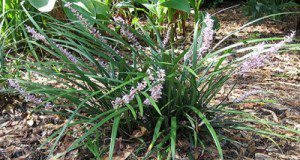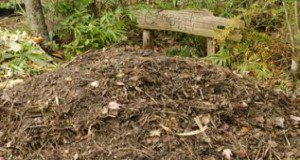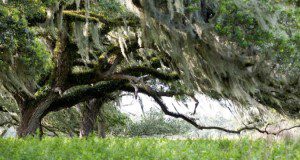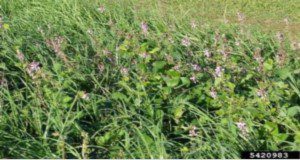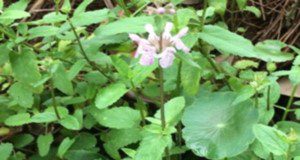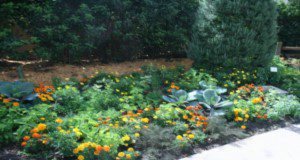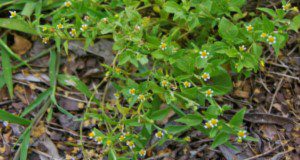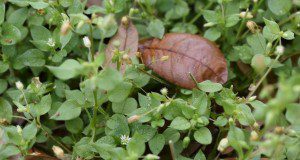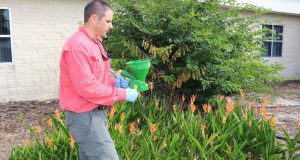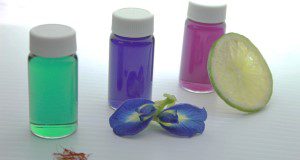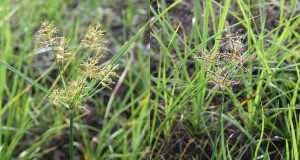This series of Key Plant, Key Pests publications is designed for Florida gardeners, horticulturalists, and landscape professionals to help identify common pests associated with common Florida flora. This new 4-page publication of the UF/IFAS Environmental Horticulture Department provides information and general management recommendations for leaf and crown rot, anthracnose, southern blight, scales, and root rot nematodes on lilyturf. Written by Juanita Popenoe, Caroline R. Warwick, and David J. Norman.
https://edis.ifas.ufl.edu/ep600
Tag: UF/IFAS Mid-Florida Research and Education Center
Recycling Organic Materials to Improve Your Florida-Friendly Edible Landscape
This new 7-page publication of the UF/IFAS Environmental Horticulture Department is intended to educate homeowners on environmentally friendly ways to enhance soil fertility for vegetables, herbs, and fruits in the home landscape. It discusses strategies for recycling nutrients in place or via composting systems to create productive edible landscapes with less waste. Adopting these methods into your landscape maintenance routine will build organic matter and add nutrients to the soil naturally. Written by Terra Freeman, Tiare Silvasy, Lynn Barber, Tom Wichman, Esen Momol, Tina McIntyre, Jacqlyn Rivas, and Jen Marvin.
https://edis.ifas.ufl.edu/ep599
Key Plant, Key Pests: Oak (Quercus spp.)
This series of Key Plant, Key Pests publications is designed for Florida gardeners, horticulturalists, and landscape professionals to help identify common pests associated with common Florida flora. This new 9-page publication provides information and general management recommendations for borers, caterpillars, insect-induced galls, twig girdlers, oak leaf blister, root and butt rot, Tubakia leaf spot, mistletoe, psocids, lace bugs, woolly aphids, powdery mildew, Spanish and ball moss, and lichens. Written by Juanita Popenoe, Caroline R. Warwick, Adam G. Dale, and Alfred Huo, and published by the UF/IFAS Environmental Horticulture Department.
https://edis.ifas.ufl.edu/ep596
Biology and Management of Creeping Beggarweed (Desmodium incanum) in Warm-Season Turf
Creeping beggarweed is a common perennial broadleaf weed in Florida landscapes, home gardens, pastures, and other agricultural production systems. This new 6-page article is written for green industry professionals and others to help aid in the identification and management of creeping beggarweed in landscape turf and planting beds. Written by Grantly Ricketts and Chris Marble, and published by the UF/IFAS Environmental Horticulture Department.
https://edis.ifas.ufl.edu/ep591
Biology and Management of Florida Betony (Stachys floridana) in Ornamental Plants in Landscape Planting Beds
Florida betony (Stachys floridana) is a perennial weed in Florida landscape planting beds, gardens, turfgrass, and agricultural production systems. This new 4-page article is written for green industry professionals and others to aid in the identification and management of Florida betony in and around ornamental plants in landscape planting beds. Written by Thomas Smith and Chris Marble, and published by the UF/IFAS Environmental Horticulture Department.
https://edis.ifas.ufl.edu/ep597
Edible Landscaping Using the Nine Florida-Friendly LandscapingTM Principles
Maintaining edible landscapes in a way that protects the environment is an important concern for protecting Florida’s water quality. The objective of this new 7-page publication is to introduce the framework of the Florida-Friendly Landscaping™ principles and apply the principles to guide decisions about Best Management Practices (BMPs) for care of edible landscapes. Written by Tiare Silvasy, Lynn Barber, Esen Momol, Tina McIntyre, Tom Wichman, Gail Hansen, Jen Marvin, Terra Freeman, Joseph Sewards, Wendy Wilber, and Jacqlyn Rivas.
https://edis.ifas.ufl.edu/ep594
Biology and Management of Galinsoga (Galinsoga quadriradiata) in Ornamental Crop Production
Galinsoga (Galinsoga quadriradiata) is an erect (upright), herbaceous, short-lived warm-season annual weed in Florida landscapes, container nurseries, and other agricultural production systems. In nurseries and landscapes, galinsoga can be a troublesome weed, but it has been utilized by some cultures for food or medicinal purposes. This new 5-page article is written for green-industry professionals and others to aid in the identification and management of galinsoga in and around ornamental plants. Written by Thomas Smith, Chris Marble, Shawn Steed, and Nathan Boyd, and published by the UF/IFAS Environmental Horticulture Department.
https://edis.ifas.ufl.edu/ep593
Small-to-Medium-Scale Sensory Evaluation of Horticultural Crops: Measuring Responses
When measuring the responses of panelists, the main principle behind sensory evaluation, a variety of sensory tests can be used. This new 4-page publication is the second in a series designed to assist producers in the small-to-medium-sized sensory evaluation of their horticultural crops, outlining the types of data and sensory measurement techniques utilized in sensory evaluation. Written by Sean Michael Campbell and Charles A. Sims, and published by the UF/IFAS Environmental Horticulture Department.
https://edis.ifas.ufl.edu/ep582
A Beginner's Guide to Begonias: Classification and Diversity
Begonias are known by their bright, full flowers and also their leaves, which vary to showcase patterns, designs or color. They are often used as hanging baskets, flowerpots, and garden beds, as well as in the landscape. This new 5-page publication of the UF/IFAS Environmental Horticulture Department is intended for Florida gardeners and horticulturalists hoping to learn more about the different classifications of begonias as well as those interested in learning more about this potential landscape or houseplant. Written by Julian Ginori, Heqiang Huo, and Caroline R. Warwick.
https://edis.ifas.ufl.edu/ep581
Biology and Management of Common Chickweed (Stellaria media) in Ornamental Crop Production
Chickweed is a common cool-season annual weed in Florida landscapes, container nurseries, home gardens, and other agricultural production systems. This new 5-page article is written for green industry professionals and others to aid in the identification and management of chickweed in and around ornamental plants. Written by Yuvraj Khamare, Chris Marble, Nathan Boyd, and Shawn Steed and published by the UF/IFAS Environmental Horticulture Department.
https://edis.ifas.ufl.edu/ep577
Florida Homeowner Herbicide Guide: Considerations, Applications, and Selection
While some people opt for professional lawn maintenance companies, some homeowners may wish to perform their own landscape pest control in order to save money, to have more control of what is applied, or simply because they enjoy it. This EDIS publication is for Florida gardeners, horticulturalists and homeowners who want to utilize herbicides to control weeds in their landscape. This new 9-page publication of the UF/IFAS Environmental Horticulture Department discusses common herbicides available at retail stores and how homeowners can use these them safely and effectively. Written by Chris Marble.
https://edis.ifas.ufl.edu/ep575
Butterfly Pea (Clitoria ternatea) Flower Extract (BPFE) and Its Use as a pH-Dependent Natural Colorant
Butterfly pea (Clitoria ternatea), a twining vine native to Southeast Asia, produces deep blue to purple flowers that bloom nearly year-round in ideal conditions. When extracted in a liquid, the addition of a mild acid such as lemon or lime juice turns the naturally deep blue to purple color into a much lighter pink or purple color, giving the extract its color-changing ability. This new 5-page publication of the UF/IFAS Environmental Horticulture Department outlines the use of butterfly pea flower extract (BPFE) as a pH-dependent natural colorant, including an explanation of the science behind the color change, detailed parameters for flower extraction, instructions for storage and processing of the extract as well as a discussion of some of the other benefits of using BPFE. Written by Sean Michael Campbell and Brian Pearson.
http://edis.ifas.ufl.edu/ep573
Biology and Management of Spanish Needles (Bidens spp.) in Ornamental Crop Production
All eight species of Bidens in Florida are commonly referred to as Spanish needles or beggar-ticks. This document focuses on Bidens alba and B. pilosa, which are common weeds in container nurseries and landscapes in Florida. This 6-page EDIS publication, written by Yuvraj Khamare, Chris Marble, Shawn Steed, and Nathan Boyd and published by the UF/IFAS Environmental Horticulture Department, is designed for landowners, gardeners, horticulturalists, and consumers hoping to learn more about Spanish needle classification and management.
http://edis.ifas.ufl.edu/ep572
How to Establish an Urban Agriculture Ordinance
While the desire to implement urban agriculture projects is growing in popularity, there is little information available to help Extension agents and interested citizens fully understand how to implement urban agriculture in their community. This new 11-page document provides an overview of key information required to establish an urban agriculture ordinance. Case studies from urban agriculture initiatives in Florida provide real-world examples of the required activities, potential challenges, and beneficial partners for implementing these initiatives. Resources related to the case studies and additional urban agriculture resources can be found at the end of the document, so that readers can find further information specific to their interests and needs. Written by Candace A. Spencer, Catherine G. Campbell, Anna Prizzia, and Liz Felter, and published by the UF/IFAS Horticultural Sciences Department.
http://edis.ifas.ufl.edu/hs1327
Biology and Management of Yellow (Cyperus escuelentus) and Purple Nutsedge (C. rotundus) in Ornamental Crop Production and Landscapes
This new six-page document provides insight on characteristics and management techniques for both yellow and purple nutsedge, prevalent and persistent weeds in Florida. Written by Debalina Saha, Chris Marble, Nathan Boyd, and Shawn Steed and published by the UF/IFAS Environmental Horticulture Department, March 2019.
http://edis.ifas.ufl.edu/ep569
Citrus Propagation
Plant propagation is the art and science of reproducing plants while preserving their unique characteristics from one generation to the next. This 6-page document, written by Ute Albrecht, Mongi Zekri, and Jeffrey Williamson, describes the propagation process for commercial citrus. Published by the UF/IFAS Horticultural Sciences Department, October 2017.
http://edis.ifas.ufl.edu/hs1309
Florida Consumer Preferences for Ornamental Landscape Plants
Certain attributes of ornamental landscape plants make them more attractive to consumers. This 5-page fact sheet written by Hayk Khachatryan and Alicia Rihn and published by the UF Department of Food and Resource Economics, October 2016, assesses the impacts of price, plant type, pollinator friendliness, production methods, and origin attributes on consumers’ purchasing likelihood for ornamental landscape plants. Recommendations for green industry stakeholders are also provided.
http://edis.ifas.ufl.edu/fe1000
